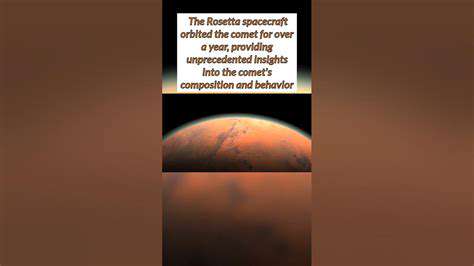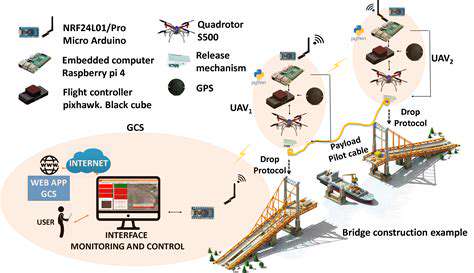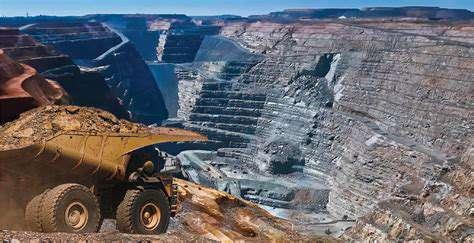The Rosetta mission, a collaborative effort between the European Space Agency (ESA) and numerous international partners, represented a monumental leap forward in our understanding of comets. This ambitious project aimed to orbit a comet and deploy a lander, Philae, to study its surface in unprecedented detail. By studying the composition and behavior of comets, scientists hoped to gain invaluable insights into the formation of our solar system and the potential for life beyond Earth.
The journey wasn't without its challenges, requiring years of meticulous planning and execution. Rosetta's intricate flight path, involving multiple gravity assists from planets, showcased the precision and ingenuity of the mission's engineers.
The Cometary Encounter: A Rendezvous with Churyumov–Gerasimenko
After a decade-long journey, Rosetta finally reached its target, Comet 67P/Churyumov–Gerasimenko. This encounter marked a significant milestone, allowing scientists to begin their observations of the comet's composition, structure, and activity. The unique shape of Comet 67P/Churyumov–Gerasimenko, resembling a duck or two joined bodies, presented a fascinating subject of study for the mission's instruments.
Observations revealed that the comet's surface was far more complex than initially anticipated, containing diverse geological features and a surprising amount of organic material.
Philae's Touchdown: A Historic Landing on a Comet
The deployment of Philae, the lander, was a critical part of the mission. This innovative technology, designed to land on a celestial body with a constantly shifting surface, faced significant challenges. The initial landing wasn't as planned, and Philae bounced a few times before settling in a less-than-ideal location.
Despite this setback, Philae successfully collected crucial data on the comet's surface composition and environment. This data proved invaluable in understanding the comet's evolution and the processes that shaped it over billions of years.
Analyzing Cometary Composition: Uncovering Solar System Origins
Rosetta's instruments provided detailed analyses of the comet's composition, including its ice, dust, and gases. Scientists were particularly interested in the presence of organic molecules, which are essential building blocks for life. These findings offered valuable insights into the early solar system and the potential for prebiotic chemistry.
The discovery of specific volatile compounds and isotopes played a crucial role in understanding the comet's formation and evolution within the early solar system.
Observing Cometary Activity: Understanding the Dynamics of a Celestial Body
Rosetta's observations of the comet's activity, including the release of gas and dust, provided a unique opportunity to study the dynamics of a comet. As the comet approached the Sun, its activity increased, allowing scientists to observe the processes that drive these changes.
The data collected on gas jets, dust plumes, and changing surface features painted a detailed picture of the comet's interactions with the solar wind and sunlight.
Rosetta's Legacy: Inspiring Future Missions
The Rosetta mission's success has had a profound impact on the field of planetary science. The innovative technologies and techniques developed for the mission have paved the way for future space exploration endeavors. The lessons learned from Rosetta, especially in dealing with the complexities of cometary environments, will be crucial for future missions to icy bodies in our solar system and beyond.
The End of a Mission: A Legacy of Discovery
As the comet moved further away from the Sun, Rosetta's mission eventually came to a planned conclusion. The spacecraft, after years of dedicated service, gently descended onto the surface of the comet, marking the end of a remarkable journey. The sheer volume of data collected by Rosetta and Philae will continue to fuel scientific research for years to come.
Rosetta's legacy extends beyond the scientific discoveries. The mission inspired a new generation of scientists and engineers, igniting a passion for space exploration and discovery.

Orbiting a Comet: A Unique Opportunity

Understanding Cometary Orbits
Cometary orbits are highly elliptical and often quite unpredictable, differing significantly from the near-circular orbits of planets. This eccentricity means that comets spend vast stretches of time far from the Sun, in the frigid outer reaches of our solar system, and then experience dramatic, accelerated movements as they approach the Sun. This dynamic nature makes studying their orbits crucial to understanding their origin and evolution.
The gravitational forces exerted by planets and other celestial bodies can subtly alter a comet's orbital path over time. These perturbations, while seemingly minor, can accumulate over vast periods, leading to significant changes in the comet's trajectory and even its eventual fate, such as a collision with a planet or ejection from the solar system.
The Role of Gravity in Cometary Motion
Gravity plays a pivotal role in shaping the movement of comets. The Sun's immense gravitational pull draws comets inwards from their distant orbits, accelerating them as they approach. This acceleration is not uniform, varying depending on the comet's position relative to the Sun and the position of other celestial bodies.
Cometary orbits are not fixed; they are constantly evolving due to gravitational influences. These influences can cause significant shifts in the comet's trajectory, impacting its future interactions with other celestial bodies in the solar system.
Observational Techniques for Cometary Orbits
Precise observations of comets are essential for accurately determining their orbits. Astronomers utilize sophisticated telescopes and advanced imaging techniques to track the comet's position against the background stars over extended periods. These observations, combined with mathematical models, allow scientists to calculate the comet's elliptical path around the Sun.
Accurate orbital calculations are crucial for predicting future cometary appearances and potential encounters with Earth. This allows researchers to prepare for observations and potentially mitigate any risks associated with a comet's trajectory.
The Importance of Cometary Orbits for Planetary Science
Cometary orbits offer valuable insights into the early solar system. Scientists believe that comets may have delivered water and organic molecules to the early Earth, playing a key role in the development of life. Analyzing the chemical composition of comets and their trajectories can offer clues about the solar system's formation and evolution.
Understanding cometary orbits is not just about charting their paths; it's about uncovering secrets of our cosmic origins. By studying their journeys, we gain a deeper appreciation of the dynamic processes that shaped our solar system.
Cometary Orbits and the Oort Cloud
Many comets originate from the Oort cloud, a hypothetical spherical shell of icy bodies surrounding our solar system. The gravitational forces from distant stars and other celestial objects can dislodge comets from the Oort cloud, sending them on their journeys inwards towards the Sun. Their orbits are often highly elongated and their periods can be incredibly long, spanning thousands or even millions of years.
Disturbances and Perturbations
The gravitational influence of planets can significantly alter a comet's orbit. Jupiter, in particular, exerts a strong gravitational pull on comets that pass close to it. This can lead to significant changes in the comet's trajectory, potentially causing it to enter a shorter orbital period or even being ejected from the solar system entirely. These perturbations are essential to understanding how cometary orbits evolve over time.
These changes are not always predictable, making the study of cometary orbits a complex and fascinating field of astronomy.
Future Research Directions
Future research will focus on refining our understanding of cometary orbits by incorporating more sophisticated computational models. This will allow scientists to account for more factors, such as the influence of smaller celestial bodies and the effects of the comet's own outgassing. These advancements will lead to more accurate predictions of cometary behavior and a deeper understanding of their role in the solar system's history.
The study of cometary orbits is a continuous process of learning and refinement. By refining our models and expanding our observations, we can unlock even more secrets about these fascinating celestial objects.
The Philae Lander: A Touchdown on a Cometary Surface
A Historic Touchdown
The Philae lander's successful touchdown on Comet 67P/Churyumov-Gerasimenko in 2014 marked a monumental achievement in space exploration. It represented a daring leap into the unknown, venturing onto a celestial body that had previously been only glimpsed from afar. This ambitious landing, part of the larger Rosetta mission, aimed to gather crucial data about cometary composition, structure, and the potential for organic molecules – elements crucial for understanding the origins of life in the universe.
Landing on a comet is undeniably challenging. The comet's irregular shape, its low gravity, and its unpredictable surface make a successful landing a truly remarkable feat. The complex choreography required to navigate the landing sequence, combined with the extreme conditions of space, highlight the sophisticated engineering and precision of the Rosetta mission and its Philae lander.
Challenges and Triumphs of the Landing
The Philae lander's initial touchdown wasn't without its hurdles. Its intended landing site proved to be less than ideal, with the landing gear becoming trapped in a shadowed crevice on the comet's surface. This unexpected outcome led to a series of challenges in deploying the lander's scientific instruments. Despite these initial setbacks, the mission's scientists and engineers remained determined to maximize the scientific return from the mission. Their ingenuity and perseverance were ultimately rewarded.
The limited operational time on the comet's surface was crucial. The team had to effectively utilize the available time to collect data and conduct experiments. Successful deployment of even a portion of the planned instruments provided valuable insight into the comet's composition and environment. The lander's scientific instruments, despite the challenges, collected important data about the comet's surface, composition, and environment.
Scientific Discoveries and Insights
The Philae lander's scientific instruments provided invaluable data about the comet's surface, revealing insights into the comet's composition and the presence of organic molecules. These findings contributed significantly to our understanding of the chemical makeup of comets and their role in the early solar system. The data collected helped scientists understand the potential for organic molecules to have been delivered to Earth, potentially playing a role in the development of life.
The mission's findings have had a profound impact on our understanding of comets. The presence of organic molecules and other compounds detected on the comet's surface suggests a rich history and potential connection to the formation of our solar system. Further analysis of the data continues to provide scientists with new insights into the origins of the solar system, including the potential for the delivery of organic molecules to early Earth.
The Legacy of the Philae Lander
The Philae lander's contribution to space exploration extends beyond its specific findings. Its innovative design and successful landing operation showcased the advancement of space technology and the meticulous planning required for complex missions. The team's resilience in overcoming challenges and maximizing the limited operational time on the comet's surface set a precedent for future space missions, demonstrating the dedication and determination required for such ambitious endeavors.
The Rosetta mission, encompassing both the orbiter and the lander, provided a comprehensive view of a comet, enabling scientists to explore both the surface and the surrounding environment in unprecedented detail. This mission has inspired a new generation of scientists and engineers, driving further exploration of our solar system and beyond. The legacy of the Philae lander remains a source of inspiration and a testament to human ingenuity in the pursuit of scientific discovery.












